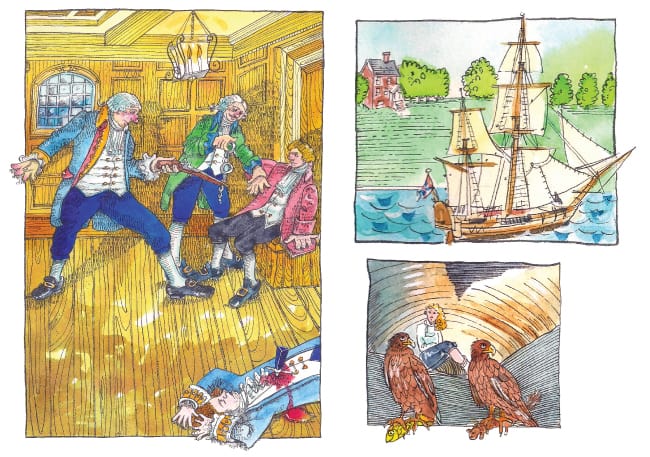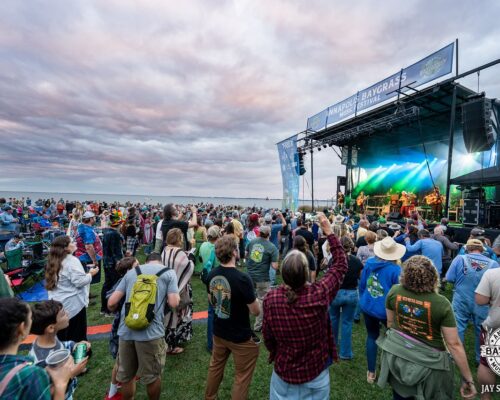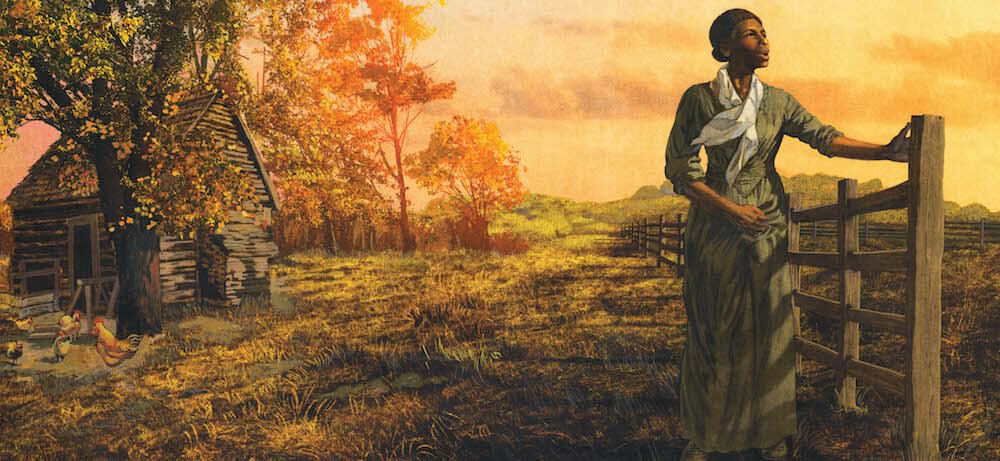By Jody Argo Schroath
I don’t know when I first heard the story that follows. But I do know that when I came across it while reading Cruises Mainly in the Bay of the Chesapeake—George and Robert Barrie’s stories of their trips around the Bay at the turn of the 20th century—I already knew it well.
For the first two hundred years or so after the event, the story in its various forms was passed down through the generations, first no doubt around firesides on long winter nights, but later in adventure stories for children and in scholarly works of historical research. It is only in the past 50 years that the story of the hotheaded Irishman George Talbot and the imperious tax collector Christopher Rousby seems to have disappeared from common knowledge.
I too hadn’t thought much about it for awhile until this summer, when, as it happened, I kept bumping into it again and again as I cruised the Bay. The first time was in June, as I was sailing Moment of Zen out of the Patuxent River. And suddenly it came back to me. There, I thought, was the very spot where the king’s ship Quaker must have lain at anchor on October 31, 1684, the fateful day when George Talbot came aboard to confront Christopher Rousby. A few weeks later, I was docked at Port Deposit on the Susquehanna River. That afternoon I explored the cliffs above town, looking for Talbot’s cave, though I knew perfectly well that it had long since been knocked down for rip-rap. Finally, I was down on Mobjack Bay and had breakfast in Gloucester Courthouse, where Talbot was held prisoner and later tried for murder.
So I have taken all of that as a sign and have written the story down here for you to read. There are as many versions of it as there are characters in this real-life drama, so I’ve just cherry-picked my way through them. But the facts remain in the archives of the State of Maryland and the Commonwealth of Virginia. The hawks, by the way, are just hearsay.
A bit of mildly tedious but useful background
After a shaky start at Jamestown in 1607, the English quickly got the hang of this New World development thing, so much so that by 1650 they were landing boatloads of eager immigrants up and down the Atlantic seaboard. By 1675, tobacco and other raw materials were flowing back to the mother country at such a splendid rate that the king (Charles III) began to regret that he had handed out charters willy-nilly to third parties like William Penn (Pennsylvania) and Lord Baltimore (Maryland).
Charles found Lord Baltimore particularly annoying because he balked at Marylanders paying a penny-a-pound tax imposed by Parliament on all tobacco sent out of the colony. Yes, taxation was already rearing its contentious head! For his part, Baltimore not only objected to the tax (he preferred to levy his own), but he especially disliked the king’s tax collector for the Patuxent River district. This was Christopher Rousby—the Rousbys being a branch of Maryland’s illustrious Carroll family. Rousby, it seems, was a bit overenthusiastic when it came to collecting that tax—seizing vessels and generally harassing the population. In letters to the Lords of Trade in London, Baltimore called Rousby a knave and a devil, seditious, wicked and a disturber of trade, among other things. Rousby returned the favor, claiming that Baltimore just wanted to appoint his own relatives as tax collectors—which was, um, kind of true.
So for a few years, the two went on calling each other names, until finally, like naughty schoolboys, they were called into the principal’s office in London to answer the charges made by each against the other. Rousby went first and made a good job of it, particularly since the king was looking for an excuse to pull Baltimore’s charter anyway. Soon afterward, Rousby returned to Maryland, and it was Baltimore’s turn to go off to England.
On his departure, Baltimore left his cousin George Talbot, recently arrived from Ireland, largely in charge of the colony. This Talbot was nothing if not a man of action. Since his arrival in Maryland in 1679, he had built a farm along the Susquehanna near Maryland’s northern border, served as surveyor general, a representative to the provincial legislature and president of the Council of Maryland. In his spare time, he acted as Baltimore’s Jack Russell terrier in the northern Chesapeake, chasing off William Penn’s Quaker settlers who were trying to establish access to the Chesapeake by settling around the North East and Elk rivers, land that was part of Baltimore’s original charter.
The murder of Christopher Rousby
Everything came to a head on October 31, 1684. On that day, All Hallows Eve, George Talbot was visiting along the Patuxent on Lord Baltimore’s business and growing more and more angry as he listened to planters and shipowners complain about Rousby’s high-handed tactics. When Talbot learned that Rousby was at that moment visiting aboard the ketch Quaker, anchored in front of Rousby’s home at the mouth of the river, he decided to pay him a visit.
There he found Rousby, the ship’s captain Thomas Allen and many of the ship’s officers. Talbot approached Rousby, and said, perhaps unwisely: “God Damme you Sone of a whore, you Dogg Rousby, give me your hand . . . ” (This according to testimony given later by the ship’s surgeon). Rousby replied that he certainly wasn’t going to shake his hand, and he didn’t like his attitude a bit.
Relations went downhill from there, and, after a discussion of the king’s right to rule, the two struggled. Suddenly, Talbot pulled out a knife “newly prepared and sharpened” (again according to the surgeon) and stabbed Rousby in the chest. Rousby died shortly afterwards, surviving only long enough to dictate a will.
Captain Allen immediately clapped Talbot in irons and the next morning, after sending Rousby’s body ashore, ordered the ship to set sail for Virginia.
Talbot was furious—not because Allen had arrested him, but because Allen was taking him out of Maryland and into Virginia.
Allen, however, argued that since Rousby was an official appointed by the crown and that the murder was committed onboard one of his majesty’s ships, then Talbot should be tried in his majesty’s courts, rather than Maryland’s provincial courts. So the Quaker sailed out of the Patuxent, down the coast and into Mobjack Bay to Gloucester. There, Allen delivered his prisoner to the new governor, Lord Effingham, who promptly had Talbot put in irons (presumably a different set of irons from the ones in which he arrived). Then, nervous about holding a prisoner of Talbot’s stature, Effingham wrote to London for instructions and put off the trial.
Big mistake.
A bit of derring-do in the dead of winter
News of Rousby’s murder spread like hot butter through Maryland and soon reached Talbot’s wife Sarah at their farm on the Susquehanna River. She immediately called in Talbot’s Irish posse and together they hatched a plan.
That December (or maybe February), Sarah Talbot, her infant child and the rest of the posse boarded a shallop and made their way south, sailing through the cold and dark, until they reached Gloucester. There they somehow succeeded in freeing her husband from jail—I wish I could tell you how, but the details are extremely sketchy. The jailer, for example, testified that Talbot simply “sprang from his irons.”
The escape team and freed prisoner raced back to the shallop and quickly beat across the Bay to the Eastern Shore and then turned north back to the Susquehanna. There the fugitive Talbot donned a blond wig (easy enough to do in those days) and hid out at the homes of friends—or, a ccording to many stories, lived in a cave in Mount Ararat near the future Port Deposit and was fed by a pair of hawks who delivered small game and/or fish to him daily.
Meanwhile, back in Virginia, Lord Effingham was thoroughly peeved. He demanded that Maryland find Talbot and give him back. He also arrested anyone he thought might have helped Talbot and clapped them in jail. All of them escaped.
Eventually, Talbot—perhaps growing tired of a diet of small game and/or fish—surrendered himself to Maryland authorities. They had no idea what to do with him. Try him? Give him back to Virginia? They couldn’t decide. Finally, they received a letter from Lord Baltimore (still in London), ordering them to return Talbot to Virginia. Which they did. Back went Talbot to Virginia and into irons.
In 1686, he was tried, found guilty and sentenced to death. But before he could be hanged, a pardon arrived from the king, who was by this time James II (Charles having died). The pardon was of little use to Talbot, who died shortly afterward of natural causes—or maybe in Ireland defending James II during the Glorious Revolution of 1688. (That was the William and Mary one, in case you’ve forgotten.)
Rousby, meanwhile, was buried near his estate, and his grave was marked sometime later by a large tombstone decorated with a nice skull and crossbones. It read,
Here lyeth the body of
XPHr ROUSBIE
Esquire Who was taken out of this
World by a violent Death receivd on
Board his Majestys ship the Quaker
Ketch CAP: Thos ALLEN Commandr
The last day of Octor 1684.
The strange tale of the traveling tombstone
For the next two centuries, the story of Rousby’s murder was part of Chesapeake lore. Locals and tourists regularly visited Rousby’s gravesite and Talbot’s cave. Even the Barrie brothers of Philadelphia made a special effort to search out Rousby’s gravestone.
Perhaps the story would never have slipped out of common memory if it hadn’t been for the U.S. Navy, who decided in the 1940s to locate the Patuxent Naval Air Station on the southern shore of the Patuxent River. The Navy also decided to wipe the slate of history clean, bulldozing ancestral homes and moving the families who had been there for generations from their land. So too Rousby’s gravesite.
Enter Samuel Young, then the owner of the Rousby property and a Michigan resident, whose late wife had come from St. Mary’s County. Young approached his hometown museum, the Henry Ford in Dearborn, Mich., offering them the gravestone and an old wooden building believed to be the Rousby home. Also there were some bones. All the museum had to do, Young said, was to carry all of it off—and erect a simple memorial to his wife. Who could resist? The museum engineers disassembled the building, packed up the gravestone and the bones and trucked all of it off to Michigan. For the next 30 years, the Rousby ensemble became part of an exhibit on pre-Revolutionary life, complete with colonially dressed guides to tell visitors the story of the pesky tax collector and Lord Baltimore’s terrier.
Somewhere along the line, it occurred to one or more of the museum’s architectural historians that the old wooden building was likely not as old as the 1600s. They did some tests and found that the trees felled for the house dated no earlier than the early 1800s. And the bones belonged to three individuals, none of them Caucasian. Oops. The museum moved the gravestone, which by this time was falling to pieces, to a back room, gave the bones a tasteful burial, re-costumed the guides and changed the story about the house to one of life in an antebellum border state.
Rousby’s gravestone pieces remained in Michigan until Lusby, Md. resident and historian Joan Kocen, with the help of anthropologist Julia King, persuaded the museum to send them back to Maryland in 2005. So where are they now? At the moment, in another back room, this time a conservation laboratory at the Jefferson Patterson Park and Museum in St. Leonard, Md., on the banks of the Patuxent River.
And the story of Rousby and Talbot? That remains on a back shelf as well, largely forgotten . . . except by you and me.
–Jody Argo Schroath




